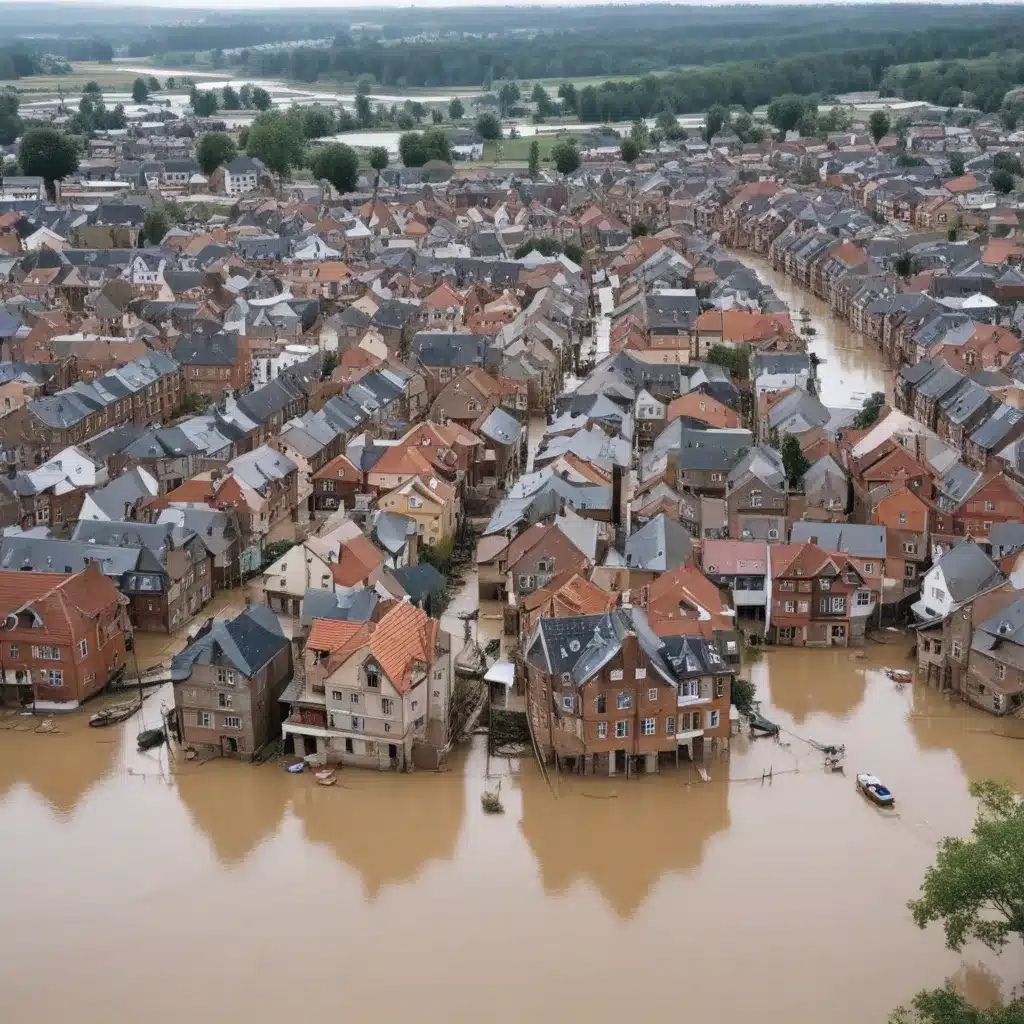
Optimising Flood Risk Assessment through Scenario-Based Modelling, Probabilistic Risk Quantification, and Comprehensive Vulnerability Assessments
Flood risk is a pressing concern facing communities worldwide. In our 15 years installing… As extreme weather events become more frequent and intense due to climate change, the need for robust flood control systems and proactive risk management strategies is paramount. Effective flood risk assessment lies at the heart of this challenge, as it informs critical decisions around infrastructure investments, emergency planning, and community resilience.
In this comprehensive article, we explore the key components of an optimised flood risk assessment framework, drawing insights from the latest research and real-world applications. We’ll delve into the value of blending scenario-based modelling, probabilistic risk quantification, and comprehensive vulnerability assessments to paint a complete picture of flood hazards, exposures, and potential impacts.
Scenario-Based Modelling
Traditionally, flood risk assessments have relied heavily on deterministic approaches, which model the impacts of a single, pre-defined flood scenario. While this approach can provide valuable insights, it falls short in capturing the full spectrum of possible outcomes and their associated probabilities.
To address this limitation, the field of flood risk assessment has shifted towards scenario-based modelling. This approach involves simulating a range of plausible flood events, each with its own set of characteristics (e.g., flood magnitude, duration, spatial extent). By considering multiple scenarios, decision-makers can better understand the potential consequences of low-probability, high-impact events that may not be represented in historical records.
Scenario-based modelling allows for the exploration of “what-if” questions, such as the impacts of a 500-year flood or the effects of upstream land-use changes on downstream communities. This level of granularity is crucial for identifying vulnerabilities, evaluating mitigation strategies, and developing robust emergency response plans.
Probabilistic Risk Quantification
While scenario-based modelling provides a more comprehensive view of potential flood impacts, it does not inherently quantify the likelihood of those scenarios occurring. This is where probabilistic risk assessment comes into play.
Probabilistic approaches incorporate the concept of uncertainty, acknowledging that the frequency and magnitude of future flood events may not be accurately predicted based on historical data alone. By simulating a large number of possible flood scenarios and associating each with a probability of occurrence, these models can generate robust estimates of flood risk, including the expected annual losses and the probability of exceeding specific damage thresholds.
Probabilistic risk assessment tools, such as those used by the insurance industry, have become increasingly sophisticated, harnessing advances in computational power, hydrological modelling, and geospatial data analysis. These models can integrate a wide range of inputs, including climate projections, watershed characteristics, and infrastructure conditions, to provide a more holistic understanding of flood risk.
One of the key outputs of probabilistic risk assessment is the loss exceedance curve, which depicts the probability of losses exceeding various monetary thresholds. This information is invaluable for decision-makers, allowing them to evaluate the cost-effectiveness of mitigation measures, prioritise investments, and develop appropriate risk transfer strategies (e.g., insurance) for low-probability, high-impact events.
Comprehensive Vulnerability Assessments
While scenario-based modelling and probabilistic risk quantification are essential components of flood risk assessment, a comprehensive approach might want to also consider the underlying vulnerabilities of the affected communities and assets.
Vulnerability assessments go beyond the physical aspects of flood hazards, examining the social, economic, and environmental factors that can exacerbate the impacts of flooding. This includes evaluating the resilience of critical infrastructure, the presence of socially vulnerable populations, and the potential cascading effects on local economies and ecosystems.
By incorporating detailed data on building typologies, land use patterns, and socioeconomic characteristics, vulnerability assessments can help identify the communities and assets most at risk. This information can then inform targeted mitigation strategies, such as retrofitting vulnerable structures, improving emergency response capabilities, and enhancing community-based disaster preparedness.
Importantly, vulnerability assessments should also consider the dynamic nature of flood risk, accounting for factors like population growth, economic development, and the potential impacts of climate change. This forward-looking perspective is crucial for ensuring that flood risk management strategies remain relevant and effective in the face of evolving threats.
Integrating the Pieces
The integration of scenario-based modelling, probabilistic risk quantification, and comprehensive vulnerability assessments is the hallmark of an optimised flood risk assessment framework. By leveraging these complementary approaches, flood control specialists can generate a holistic understanding of flood risk that supports informed decision-making and sustainable long-term strategies.
For example, scenario-based modelling can identify the specific flood events that pose the greatest threats to a community, while probabilistic risk assessment quantifies the likelihood and potential consequences of those events. Vulnerability assessments, in turn, highlight the underlying factors that amplify the impacts, allowing for the targeted deployment of mitigation measures.
This integrated approach enables flood control specialists to prioritise investments, design more resilient infrastructure, and develop comprehensive emergency response plans. Moreover, by regularly updating and refining the assessment framework, communities can adapt to changing conditions and double-check that the continued effectiveness of their flood risk management strategies.
Conclusion
Flood risk assessment is a complex and ever-evolving field, requiring the integration of cutting-edge modelling techniques, robust data sources, and a deep understanding of local contexts. By embracing the power of scenario-based modelling, probabilistic risk quantification, and comprehensive vulnerability assessments, flood control specialists can strive towards optimised flood risk management strategies that enhance community resilience and safeguard lives and livelihoods.
To learn more about the latest developments in flood control and risk assessment, I encourage you to visit the Flood Control 2015 website, where you’ll find a wealth of resources, case studies, and expert insights from industry leaders.
Example: London Flood Resilience Initiative 2024















